
Ads purposefully misspell words. They use fragments and run-ons. They actively avoid logic. Even the product names can make an editor’s eyes bleed.

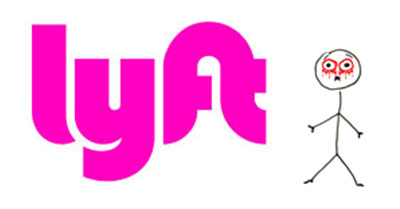
(Tell the truth. Did you already know that’s a misspelling of “fillet”?)
Moreover, advertisers do all these things after conducting expensive marketing research with focus groups, taste tests, mall surveys, and God knows what else. Even a small correction by an editor might be contradicted by $100,000 in research.
Get a free sample proofread and edit for your English document.
Two professional proofreaders will proofread and edit your English document.
Nevertheless, ads need editors as much as anything people spend money to publish. So, how is it done?
For this post, we’ll start with the most self-explanatory.
Make the Style Consistent
Regardless of how much liberty is taken with spelling and grammar, the ad should not contradict itself. This means that any purposeful mistakes must be consistent in style.
Take a look at this one.
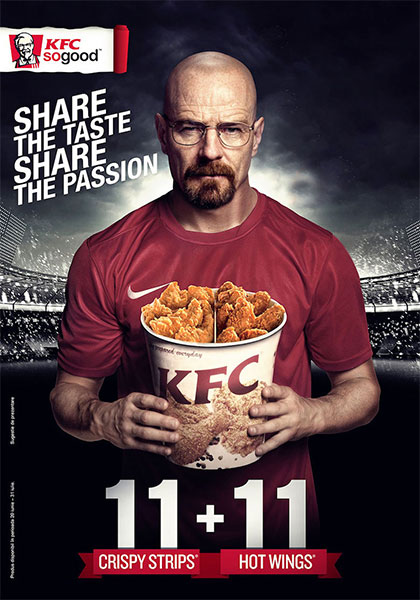
Notice that all the sentences are treated as fragments, including the ones that aren’t. “Share the taste” is actually a sentence, as is “Share the passion.” But they have no terminal punctuation (i.e., periods).
But check out what happens if we put periods there.
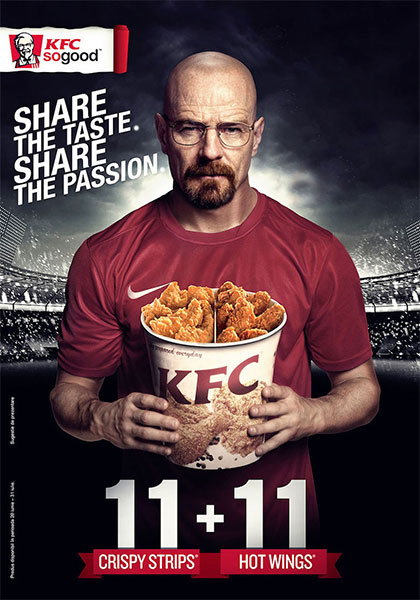
All “correcting” the copy here does is separate the two full sentences from the nonsentences of “11 Crispy Strips + 11 Hot Wings” as well as “KFC sogood.” This works against the structure of the ad because “taste” is supposed to go with “Crispy Strips” (and the B&W background), and “passion” is supposed to go with “Hot Wings” (and the red Nike shirt). That duality is also supposed to resonate with the good man/bad man duality of Walter White’s character from Breaking Bad.
(“Walter” comes from the Old High German “Walthari,” which can mean “a powerful man,” as opposed to “white,” which can mean “neutral.” The name suggests power that goes nowhere [spoiler alert]. “Walthari” can also mean “power” all by itself, so we have “White Power” for his name, which is relevant considering how he gains power in the Mexican drug business.)
So those periods aren’t helping the duality of the ad. They also work against the obvious nongrammatical “sogood,” which is separated by a change in color (black vs. red/neutral vs. spicy) instead of a space (i.e., “so good”).
So yeah, the periods aren’t only unhelpful for the meaning of the sentences, they detract from the structure of the whole ad. Editing them in would get you nothing but rolled eyes.
In contrast, look at this classic ad that is about as different from the first as I could find.
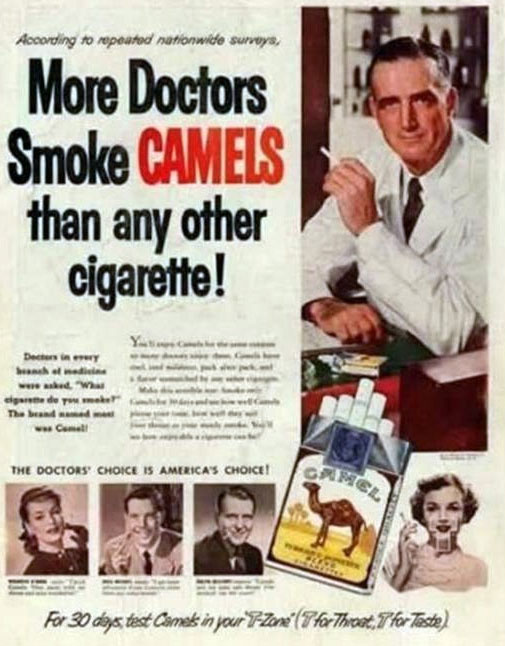
Don’t worry about reading the fuzzy stuff. This ad’s grammar is perfect. Look at those commas after “surveys” and “days.” Look at the properly located period after “T for Taste).”
Now, also look at the point of the ad: Smart people smoke Camels.
Of course, you want good grammar here. If you were editing this ad and found even a small mistake, you’d want to point it out. Smart people appreciate good grammar.
And in case you think that’s just because the ad is old, check this out:

Whether you agree with the ad, it’s clear that it is trying to look rational and smart. Notice the sentences all have terminal punctuation (i.e., periods and a question mark) at the ends. Even the name of the organization is a statement, “Moms demand action,” with an exclamation point in your face. There’s also the up-to-date (woke?) grammar of using “them” to refer to the two girls rather than “her.” (For more on this, see this post.)
So again, fixing any bad grammar would be good for that ad, but not for, say, this one:

Indeed, this ad is so anti-grammar with periods at the ends of the fragments and the made-up word “chemistered” that when it offers the sentence, “Purify your world,” it uses an star instead of a period. It’s positively grammarphobic, and an editor working on it should notice.
And let’s be honest, “It was brewed by brewers, not developed by chemists,” isn’t as fun to read, especially for a beer.
Thus, use consistently good grammar here:
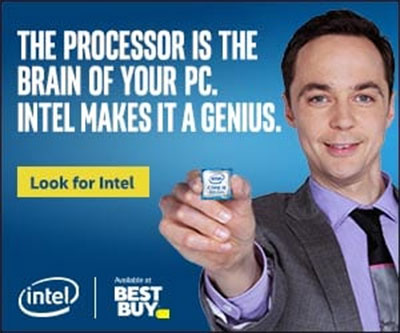
(Though I would argue that there should be a period after “Look for Intel.”)
And use consistently bad grammar here:
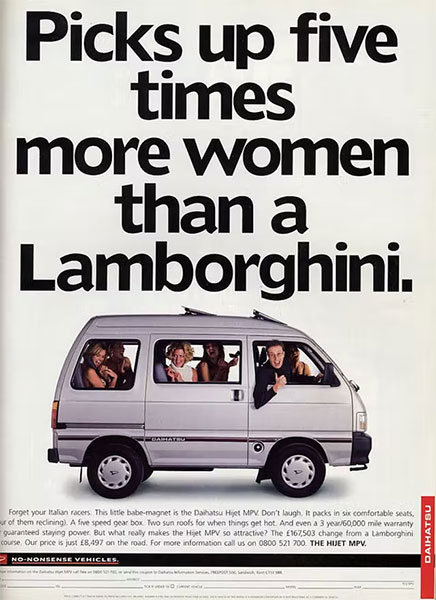
Again, don’t worry about the fuzzy part. That’s a period at the end of a fragment in the big text and four more periods at the end of fragments in the fine print. The bad grammar goes well with the “logic” of the argument and the ad’s you-see-what-we’re-doing tone.
So, in short, when you’re editing an ad and wonder whether the grammar needs to be correct or consistently incorrect, read the room.
Julia H.
Get a free sample proofread and edit for your English document.
Two professional proofreaders will proofread and edit your English document.
Get a free sample proofread and edit for your document.
Two professional proofreaders will proofread and edit your document.
We will get your free sample back in three to six hours!